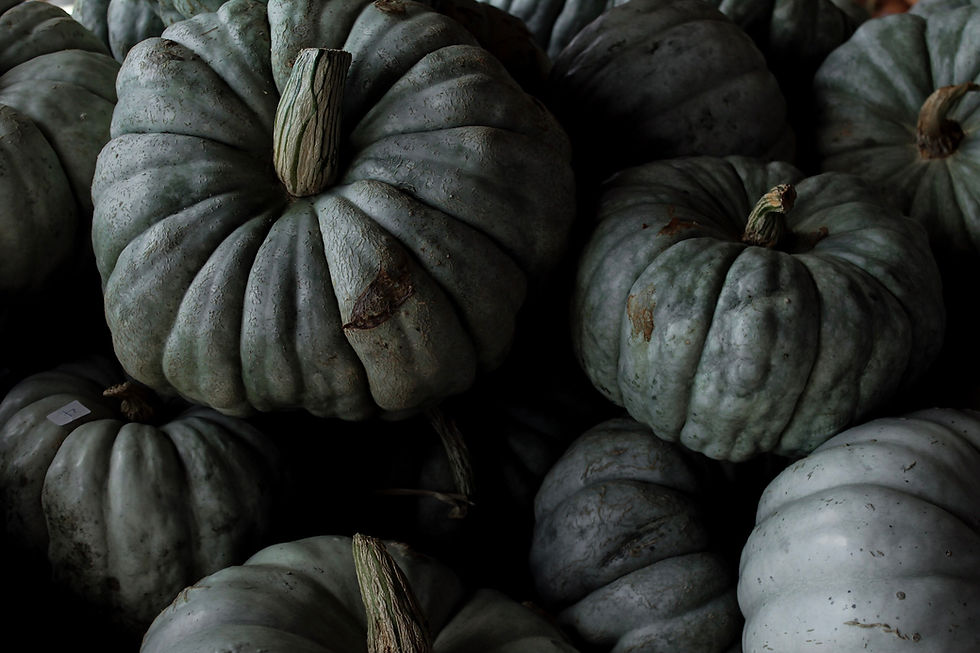New Update USDA Hardiness Zone Map
- Blue Pumpkin Seed Co.

- Nov 20, 2023
- 3 min read
Updated: Mar 8, 2024
Check your zip code to see if your hardiness zone has changed. This could impact when to start your seeds indoors, how long your growing season will be, and more. A link will be provided for you to check, read for more information below.
Navigating Change: Exploring the New USDA Hardiness Zone Map
As the seasons shift and climate patterns evolve, gardeners and plant enthusiasts alike find themselves faced with new challenges and opportunities. One significant tool guiding our understanding of these changes is the recently updated USDA Hardiness Zone Map. Join us on this exploration as we delve into the nuances of this updated map and uncover what it means for your gardening endeavors.
Understanding the USDA Hardiness Zone Map:
The USDA Hardiness Zone Map serves as a valuable resource for gardeners, providing crucial information about the climatic conditions in specific regions. Recently, the map underwent an update in 2023, reflecting the evolving climate patterns across the United States. This update introduces changes in zone boundaries, presenting a more accurate and current depiction of the temperatures plants are likely to encounter in different regions.
Implications for Gardeners:
For gardening enthusiasts, this update brings both challenges and opportunities. Plants that were once considered borderline in certain zones may now find more favorable conditions, expanding the range of species that can thrive in your garden. On the flip side, some traditional favorites may face new challenges as zones shift. Understanding these changes is vital for successful gardening, as it helps you make informed decisions about plant selection, care, and overall garden planning.
Pros:
You may have a longer growing window to try new varieties that take longer to mature.
You can get a later start on your garden if you don't have it planned out yet.
You can also get an earlier start on your seeds if you are starting them indoors.
Cons
If your zone has changed to a lower number, you will have a shorter growing zone.
Varieties you were able to grow before may have a shorter growing window.
You may have to wait longer to start your seeds indoors if your last frost date has moved to a later timeframe.
Adapting to Change:
As stewards of our green spaces, adapting to the shifting hardiness zones becomes a key aspect of responsible gardening. Embracing resilient plant varieties, implementing sustainable gardening practices, and staying informed about local climate trends are crucial steps in navigating these changes successfully.
Practical Tips for Gardeners:
1. **Review and Adjust Plant Selection:** Take a closer look at the new hardiness zone map and reassess your plant selection accordingly. Choose varieties that align with the updated zone recommendations for your region.
2. **Stay Informed:** Keep an eye on local climate trends, and consider joining gardening communities or local horticultural groups to share insights and experiences with fellow gardeners.
3. **Experiment with New Varieties:** With the changing climate, now is an excellent time to experiment with plant varieties that were once considered marginal in your zone. You might discover new favorites that thrive in the evolving conditions.
We learned that we changed from 5A to 6A. This opens up a longer gardening season for us which means we have several new varieties we can grow.
Click this link to access the USDA's website to find out if your hardiness zone has changed.
Conclusion:
The updated USDA Hardiness Zone Map is more than just a tool; it's a reflection of the dynamic nature of our environment. As gardeners, embracing change and staying informed allows us not only to adapt but also to contribute to the resilience and beauty of our green spaces. Explore the possibilities, experiment with new varieties, and let this updated map be your guide in navigating the ever-evolving world of gardening.
After Checking Your Hardiness Zone, Did Your Zone Change? Are There Any New Seed Varieties You Can Grow Now?
0%Yes
0%No














Did you see any changes to your zone? Mine did stay the same.